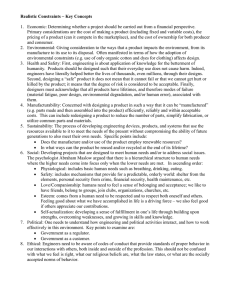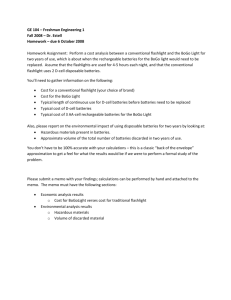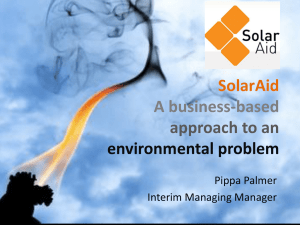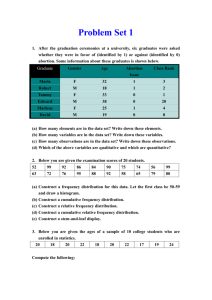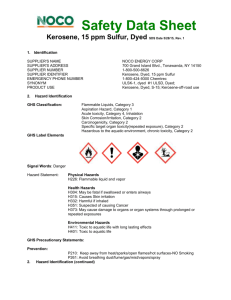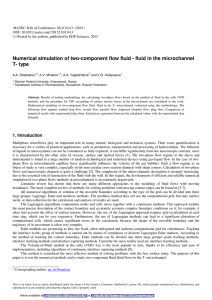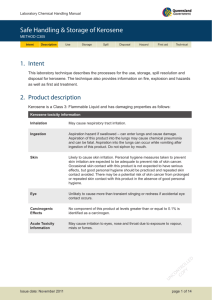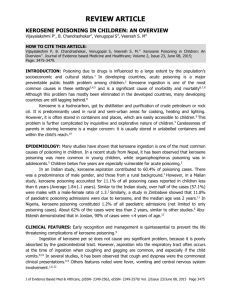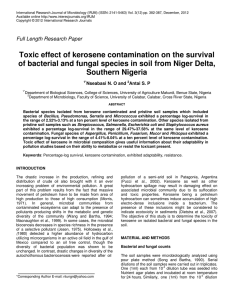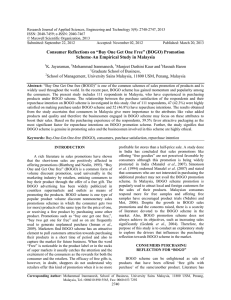Realistic Constraints, 1 (economic, environmental, health & safety)
advertisement
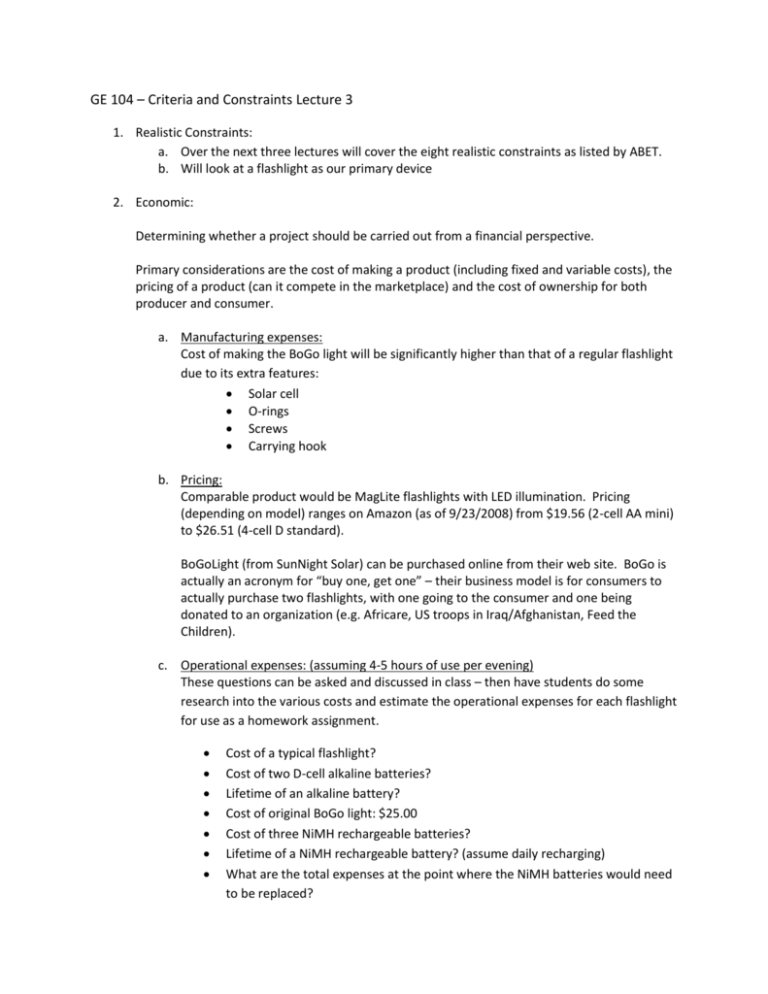
GE 104 – Criteria and Constraints Lecture 3 1. Realistic Constraints: a. Over the next three lectures will cover the eight realistic constraints as listed by ABET. b. Will look at a flashlight as our primary device 2. Economic: Determining whether a project should be carried out from a financial perspective. Primary considerations are the cost of making a product (including fixed and variable costs), the pricing of a product (can it compete in the marketplace) and the cost of ownership for both producer and consumer. a. Manufacturing expenses: Cost of making the BoGo light will be significantly higher than that of a regular flashlight due to its extra features: Solar cell O-rings Screws Carrying hook b. Pricing: Comparable product would be MagLite flashlights with LED illumination. Pricing (depending on model) ranges on Amazon (as of 9/23/2008) from $19.56 (2-cell AA mini) to $26.51 (4-cell D standard). BoGoLight (from SunNight Solar) can be purchased online from their web site. BoGo is actually an acronym for “buy one, get one” – their business model is for consumers to actually purchase two flashlights, with one going to the consumer and one being donated to an organization (e.g. Africare, US troops in Iraq/Afghanistan, Feed the Children). c. Operational expenses: (assuming 4-5 hours of use per evening) These questions can be asked and discussed in class – then have students do some research into the various costs and estimate the operational expenses for each flashlight for use as a homework assignment. Cost of a typical flashlight? Cost of two D-cell alkaline batteries? Lifetime of an alkaline battery? Cost of original BoGo light: $25.00 Cost of three NiMH rechargeable batteries? Lifetime of a NiMH rechargeable battery? (assume daily recharging) What are the total expenses at the point where the NiMH batteries would need to be replaced? 3. Environmental Giving consideration to the ways that a product impacts the environment, from its manufacture to its use to its disposal. Note that this is different from sustainability: using the resources available to meet the needs of the present without compromising the needs of future generations. Example: one can create a sustainable process (e.g. burning of wood from tree farms as a fuel source) but at an environmental cost. One can also develop eco-friendly processes that are not sustainable. a. Direct comparison Both flashlights are made from plastics. What are the resources utilized to make plastics? Both flashlights consume batteries. How many batteries will need to be disposed of? What are the hazards involved with improper disposal of batteries (i.e. look at their chemical composition)? THESE QUESTIONS ARE TO BE RESPONDED TO IN THE HOMEWORK b. Comparison between BoGo Light and alternative illumination sources Kerosene, candles, and wood require combustion – byproducts of this oxidation include CO2 and fine particulate matter. Using kerosene as an example: US EPA statistic: One kerosene lantern, used for four hours each day, emits 100 kg of CO2 into the atmosphere – approximately the same amount that a passenger car emits in a week. 4. Health and Safety Engineering is about application of knowledge for the betterment of humanity. Products should be designed such that their everyday use does not cause harm. Note that designing a “safe” product it does not mean that it cannot fail or that we cannot get hurt or killed by the product; it means that the degree of risk is considered to be acceptable. Must acknowledge that all products have lifetimes, and therefore modes of failure (material fatigue, poor design, environmental degradation, and/or human error), associated with them. Both designs promote safety through the production of artificial illumination. Health and safety issues only come into play when comparing against other forms of illumination in the developing world. Using kerosene as an example: World Bank statistic: It is estimated that 780 million people in the developing world are exposed to kerosene lantern fumes at a level that is equivalent to smoking two packs of cigarettes a day; 1.6 million die each year from indoor air pollution. Mosquitoes are attracted to the CO2 generated through the combustion of kerosene; as malaria is contracted through mosquito bites, it is thought that the replacement of kerosene lamps with electric illumination will help to lower the risk of contracting malaria. Accidental fires are caused through the use of kerosene lamps; replacing them with flashlights will cause reductions in deaths, injuries, and property loss. IF TIME PERMITS: discuss safety in terms of possible modes of transportation between New York City and Los Angeles: on foot, bike, horse, car, train, airplane. What are the relative risks? What are the relative costs, both financially and in terms of personal time? In what ways do we accept higher risks? (want to try to raise the issue that there are trade-offs when making decisions.)
